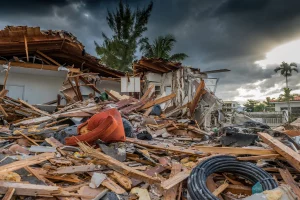Introduction
Natural disasters are increasingly casting a shadow on our homes and, consequently, on our finances. Homeowners insurance, designed to provide peace of mind, is feeling the heat as the impact of natural disasters grows. This article explores the intricate relationship between these disasters and the cost of home insurance premiums.
The Growing Threat of Natural Disasters
Climate change is triggering a surge in the frequency and intensity of natural disasters. From devastating wildfires to monstrous hurricanes and catastrophic floods, no corner of the globe is immune. As we grapple with the consequences, it’s essential to understand how these events are reshaping the world of home insurance.
The Influence on Home Insurance Premiums
1. Escalating Risk
The escalating risk posed by natural disasters has become a pivotal factor in determining home insurance costs. High-risk areas, such as those prone to hurricanes, wildfires, or floods, are witnessing substantial premium increases. Insurance providers must anticipate a higher likelihood of claims in these vulnerable zones.
2. Vulnerability of Homes
The vulnerability of homes to natural disasters plays a pivotal role. Homes ill-equipped to withstand these events are at greater risk, which leads to higher insurance costs. Homeowners can proactively address this by investing in resilient construction and safety features.
3. Claims History
The history of claims stemming from natural disasters can directly impact insurance premiums. Frequent claims can categorize homeowners as high-risk policyholders, resulting in increased costs or potential difficulties in securing coverage.
4. Regulatory Changes
Regulatory changes at the state or federal level can trigger insurance cost fluctuations. Modifications in flood zone designations, building codes, or zoning laws may lead to shifts in insurance pricing.

Safeguarding Your Home and Budget
In light of the rising impact of natural disasters on home insurance premiums, consider these strategies to protect your property and your finances:
- Mitigation Measures: Take steps to fortify your home against potential disasters. This includes reinforcing roofs, windows, and considering fire-resistant landscaping.
- Comparison Shopping: Don’t rush into the first insurance quote. Instead, compare rates and coverage options from multiple providers to find the most cost-effective solution.
- Higher Deductibles: Increasing your deductibles can translate to lower premiums. Just ensure you have the financial capacity to cover the higher deductible in the event of a claim.
- Policy Bundling: Consider bundling your home and auto insurance policies with the same provider to benefit from discounts.
- Strong Credit: Maintaining a robust credit score can lead to lower premiums. To boost your credit rating, pay bills on time and reduce outstanding debt.
High-Risk Areas and Their Challenges
Here’s an overview of high-risk regions and the unique challenges they face:
| Region | Common Natural Disasters | Insurance Premium Impact |
|---|---|---|
| Coastal Areas | Hurricanes, Flooding | Elevated premiums due to hurricane and flood risk. |
| Tornado Alley | Tornadoes, Hailstorms | Increased premiums due to tornado and hail risks. |
| Earthquake-Prone Areas | Earthquakes | High premiums due to earthquake risk. |
| Wildfire-Prone Regions | Wildfires | Elevated premiums due to wildfire risk. |
| Flood-Prone Zones | Flooding | High premiums due to flood risk. |
Conclusion
As natural disasters gain momentum, they are redefining the landscape of home insurance premiums. Homeowners must grapple with the challenges by taking proactive measures to reduce risk, exploring insurance options, and considering cost-saving strategies. The world may be under fire, but protecting your home and finances is more critical than ever.
In conclusion, your home is a sanctuary, and safeguarding it against the relentless forces of nature is a fundamental step. Stay informed, stay vigilant, and adapt to the evolving terrain of home insurance in the era of natural disasters.



